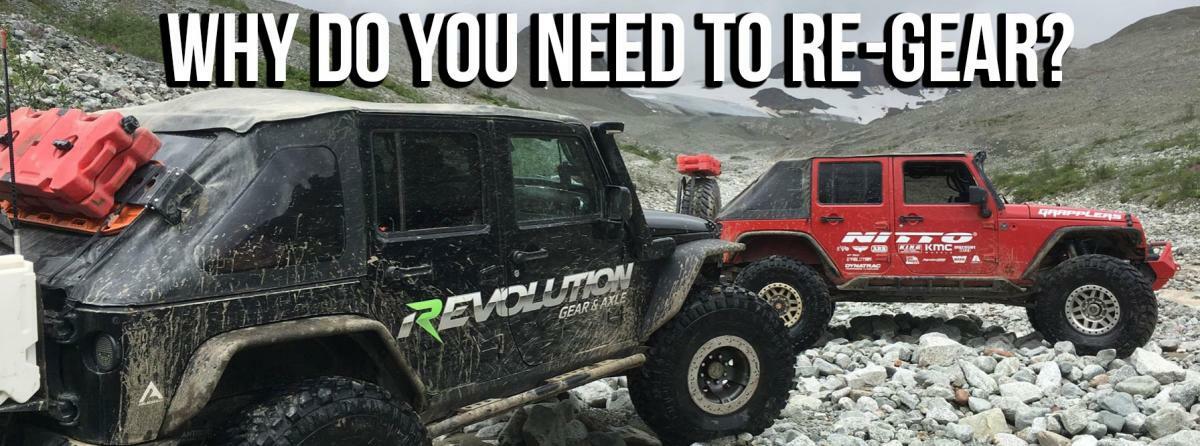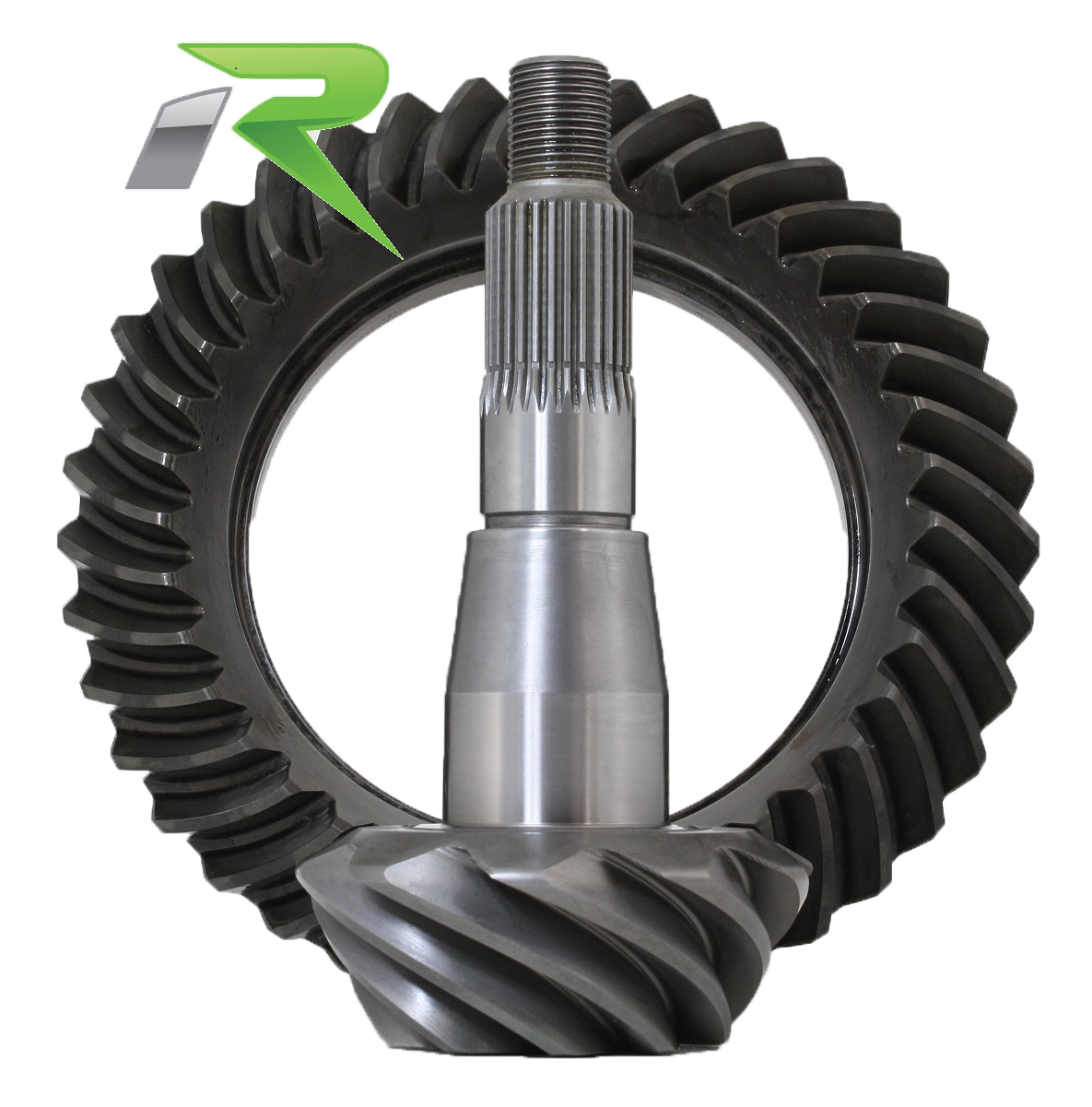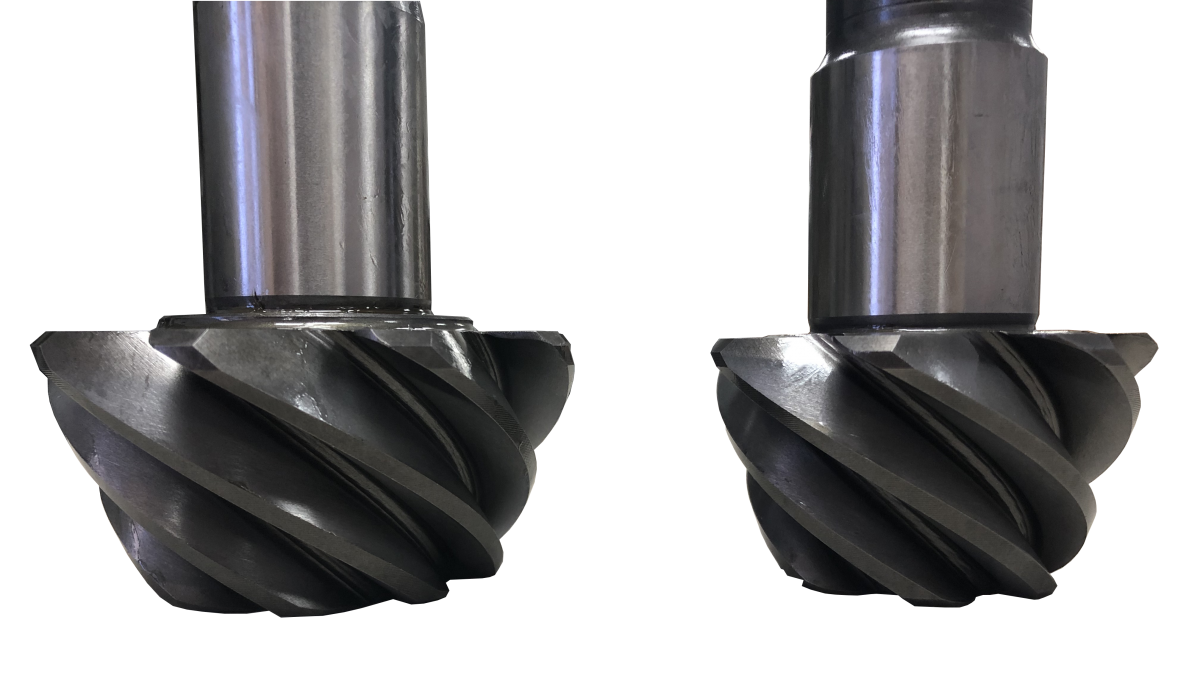Re-Gearing Your Vehicle
Nov 30th 2023

Gear ratios play a big role in how a vehicle drives on or off the road. They affect your top speed, acceleration, fuel economy and even your shift points.
The stock gear ratios are usually sufficient for daily driving. However, to maximize drivability in certain environments, re-gearing may be necessary. This is especially true if you're adding a lift kit or switching to tires that are larger and heavier than what the manufacturer used to set the factory ratio.
Before we dive down the path of why and when to re-gear your Jeep, truck or other 4x4 vehicle, let's first go over the basics of what gears are and what they do.
What is a Ring & Pinion Gear Set?
Inside your front and rear differentials are a pair of lapped ring and pinion gear sets. The spline end of your pinion gears connects to your front and rear drive shafts, and the gears on the pinion head mate with the ring gear. This is bolted to the differential carrier which ultimately spins your axles. The lapping process is when mated gears are rotated together under a light load with an abrasive media - this corrects any small errors in the gear tooth profile from heat treatment and ensures a good contact pattern. After the lapping process, the ring and pinions are a matched set and cannot be used separately.
Your ring and pinion gear ratio determines torque, top speed and fuel economy. Factory gear ratios typically come in the 3.55-4.10 range. This ratio signifies how many times the driveshaft must spin for the wheels to turn once. For example, the driveshaft of a Jeep Rubicon with a factory 4.10 ratio ring and pinion would spin just over four times to turn your wheels one full rotation.
Gears with numerically lower ratios are "taller" and numerically higher gear ratios are "shorter." Taller gears provide higher top speed and fuel economy while shorter gears provide more torque and acceleration. Rock crawlers prefer shorter gears to go much slower over terrain, providing the driver more control when navigating over obstacles.
Conversely, cruisers and daily drivers prefer taller gears that are more efficient on even ground.Along with the individual gears, there is also separate gearing in the transmission and the transfer case. Together, this determines the Final Drive Ratio (FDR) or Final Gear Ratio (FGR).
Why Do I need to Re-Gear?
 If you're
reading this article, you have most likely either already installed a lift kit and bigger tires on your vehicle or
are planning on it. When you install larger tires, the diameter of the tires, the added rolling resistance and the
weight of the new tires all put additional stress on your drivetrain.
If you're
reading this article, you have most likely either already installed a lift kit and bigger tires on your vehicle or
are planning on it. When you install larger tires, the diameter of the tires, the added rolling resistance and the
weight of the new tires all put additional stress on your drivetrain.
The factory gear ratio was not meant to accommodate this change, and you may find it difficult to engage all of your transmission gears.For example, 2018 and newer Wrangler JLs with 4.10 ratio ring and pinions rarely shift into 7th and 8th gear when larger tires are added. Most likely, you'll also experience a loss of fuel economy. Simply put, you're losing power, performance and money out of your pocket - not to mention your speedometer and tachometer readings will also be inaccurate.
In effect, bigger tires give your vehicle a lower FDR as if you switched to shorter gears. (Note smaller tires will have the opposite effect and make the gear ratio taller.) Re-gearing a Jeep or truck can bring your vehicle back to its optimal power band, which saves you money on gas if your vehicle is a daily driver. Or if the primary purpose is off-roading, an updated gear will provide the performance you need to tackle any terrain.
How to Re-Gear your Vehicle
Re-gearing is a labor-intensive process that generally should only be tackled by professional mechanics or experienced DIYers. We strongly encourage you to research your local axle regearing shops and pick one with good reviews, ideally with a specialization in Jeeps or off-roading.
Whether doing it yourself or hiring a pro, see our gear ratio tools for helpful tips on how to pick your desired gear ratio. Keep in mind that many differentials have a carrier break, which can increase the cost of a gear job. Revolution Gear & Axle tackles this problem on popular gears by making a Thick Gear, eliminating the need for a new carrier.
Enjoy Your New Driving Experience!
Now get out there and enjoy your decision to re-gear, bringing back your vehicle's fuel economy and performance. Remember to adhere to Break-In Procedures to ensure your new gears last you as long as you need them!

